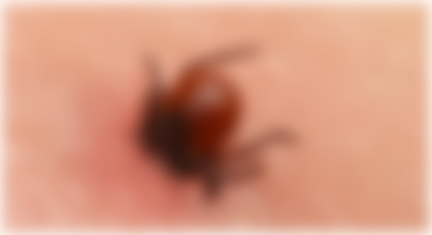More than 60% of the world population owns a pet. More often than not, people have a cat or dog. Dogs have been kept as pets for over 14 centuries. Many studies have confirmed the positive effects of pets on humans. On the one hand, dogs have a positive effect on the socialization and mental health of their owners, but on the other hand, dogs play an important role in the transmission of viral, bacterial and parasitic infections to humans. Infectious diseases can be transmitted to humans through contaminated saliva, infected urine or feces, and direct contact with a dog. Children, the elderly, and those with weakened immune systems are particularly at increased risk of infection.
Infections that are most often transmitted to humans from dogs.
Campillobacteriosis
This bacterium is the most common cause of gastroenteritis in humans. The infection occurs more often in a mild form and the prognosis of the disease is favorable, but among children under one year old, as well as in weakened persons, severe complications are possible, leading to the chronicity of the process or to death. Campillobacteriosis is dangerous for pregnant women: transplacental infection of the fetus leads to spontaneous abortion or intrauterine infection of the embryo.
Leptospirosis

Dogs excrete the pathogen in their urine. Leptospira enter the human body through the skin (more often damaged) integuments, mucous membranes. Further, with the blood stream, they are carried throughout the body and enter various organs. In terms of the frequency of deaths, the multiplicity of clinical symptoms, this disease occupies one of the first places among infectious diseases transmitted to humans from animals.
Listeriosis

It occurs most often in the elderly, newborns, in people with immunodeficiencies. In recent years, the risk category has been supplemented by a large group of people who are addicted to intravenous drugs. Their listeriosis is often fatal. Infected animals excrete bacteria into the external environment with saliva, feces, urine. The disease is dangerous for pregnant women.
Pasteurellosis

An acute infectious disease characterized by fever, general intoxication, inflammation of the skin, subcutaneous tissue, arthritis, osteomyelitis. The disease is dangerous by the development of a septic form, which is most severe with a high probability of secondary foci in various organs (endocarditis, brain abscesses, purulent meningitis, purulent arthritis, etc.). Infectious toxic shock may develop.
Capnocytophage infections

The causative agent of the infection lives in the oral cavity of dogs. Human infection occurs through bites, scratches and salivation. Risk factors for the disease are asplenia (congenital or acquired pathology, characterized by the absence of a spleen), prolonged use of glucocorticoids, alcohol abuse. Against the background of these conditions, the course of the infection becomes lightning-fast. Capnocytophaga canimorsus causes sepsis, meningitis, infective endocarditis, phlegmon, purulent arthritis, and other life-threatening complications.
Rabies

The disease always ends in death. Infection occurs through bites, scratching, salivation by sick animals, by contact with objects contaminated with infected saliva.
Tick-borne borelliosis

Carriers are ixodid ticks, which become infected by sucking the blood of infected animals. A disease with an acute or chronic course, in which damage to the skin, nervous, cardiovascular systems, liver and musculoskeletal system is possible.
Norovirus infection

Scientists know that there is a possibility of transmission of norovirus infection from dog to person.
Ringworm

Bald spots on the scalp or pink, rounded spots on the rest of the body. From an animal, a person becomes infected by stroking wool. Children become infected with ringworm from puppies, which are picked up while playing. Direct contact is not necessary - the ringworm fungus can persist on objects for a long period of time (from several months).
Toxocariasis

The main source of the spread of infestation for humans is dogs, especially puppies. Infection occurs through direct contact with an infested animal, the wool of which is contaminated with toxocar eggs, as well as by ingestion of soil in which the toxocar eggs were in the mouth.
From the eggs that enter the mouth, then larvae emerge into the stomach and small intestine, migrating through the bloodstream to the liver. There, some of the larvae settle and an inflammatory membrane forms around them. The rest of the larvae migrate to the heart and lungs. Toxocar larvae can be localized in various organs and tissues - kidneys, muscles, thyroid gland, brain, etc. In the tissues, the larvae remain viable for many years and periodically, migrate and provoke relapses of the disease.
One of the most serious problems associated with toxocariasis is the relationship between invasion and the development of bronchial asthma.
Giardiasis

The main manifestations of giardiasis are allergic and pathological neurological reactions
Echinococcosis

It is from dogs that a person most often becomes infected with echinococcosis, a disease caused by tapeworm larvae (cestodes).
The transmission of the pathogen occurs when a dog licks a person, upon contact with the animal's hair.
The secretions of an infected dog fall on the grass, berries.
Once in the human body, the egg containing the young larva migrates.
The larvae form round or oval cysts filled with liquid, ranging in size from 1-5 to 40 cm and even more. Most of the larvae are retained in the liver, some go to the lungs, and some go to the kidneys, bones and brain. The larva can enter any organ, and the cyst can burst and release dozens more larvae. Growing up, the echinococcal cyst pushes and squeezes the host tissues, which subsequently atrophy and die.
Complications of the disease: cyst suppuration, pleurisy, peritonitis, obstructive jaundice, cirrhosis, pulmonary hemorrhage, cardiovascular failure. The most formidable complication is the rupture of the cyst, which is accompanied by severe pain and an allergic reaction (anaphylactic shock).
Dog tapeworm (cucumber)

Cucumber tapeworm (Latin Dipylidium caninum), or dog - helminth, which is the causative agent of dipylidiosis. An adult worm parasitizes a dog's body. Human infection occurs when an infected flea, a dog's louse is accidentally swallowed, or through the saliva of animals. Young children who come into contact with pets are at risk.
Scabies

Infection caused by the mite Sarcoptes scabiei, an external parasite of animal skin. Scabies mites can be spread from infected dogs to humans.
The characteristic signs of the disease are itching and rash, often with the addition of secondary pustular elements due to infection when scratching
Ways of Preventing this Diseases/Infections
By following simple rules, you can protect yourself and your loved ones from infection.
1. do not forget to do all the necessary vaccinations for your pets
2. if you notice that the animal begins to have diarrhea, treat it promptly
3. Use your veterinarian's recommended flea and tick protection regularly, and remember to check your pets for parasites.
4.if you find a tick on yourself or on your pet, remove it immediately, and then wash your hands thoroughly with soap and water.
5. wash your hands well after bathing the dog, cleaning pet excrement (always wearing gloves), as well as after gardening (there may be contaminated animal excrement in the soil).
6. if you are expecting a child, entrust another family member to care for the dog and try to avoid contact with the animal.
That's the end of today's session. Stay safe.












